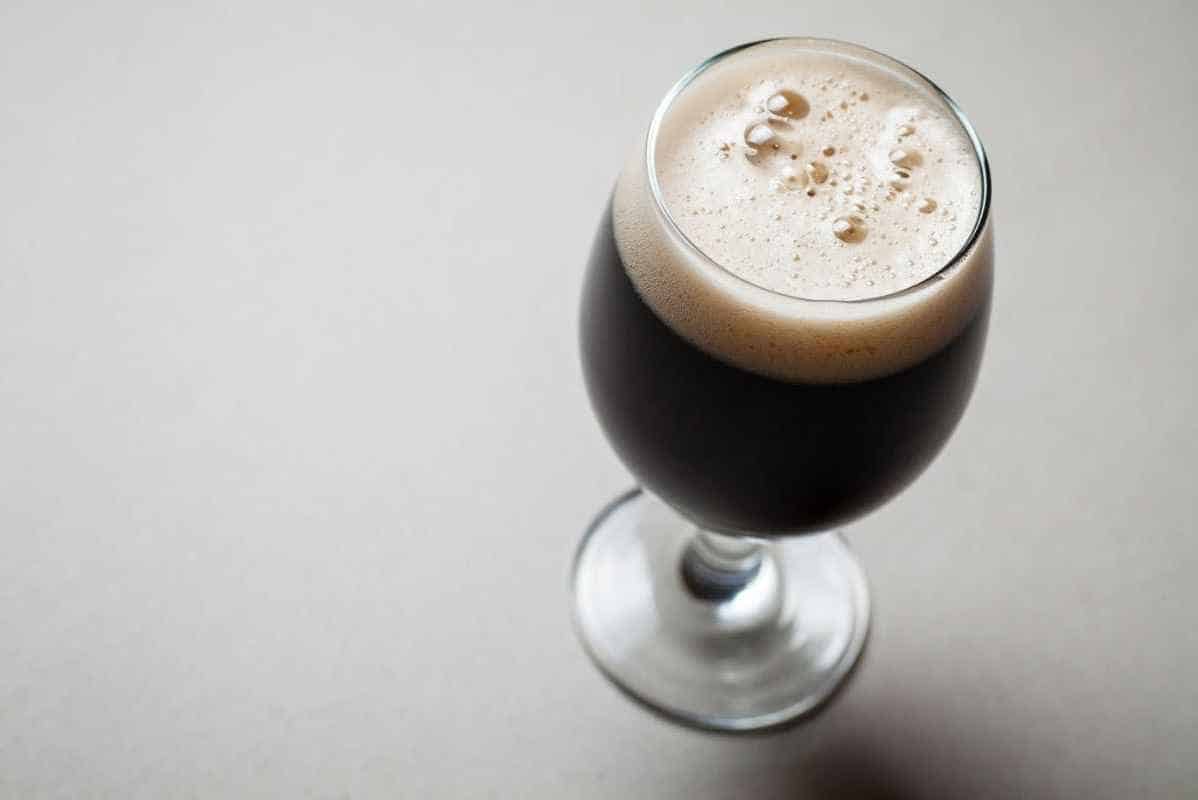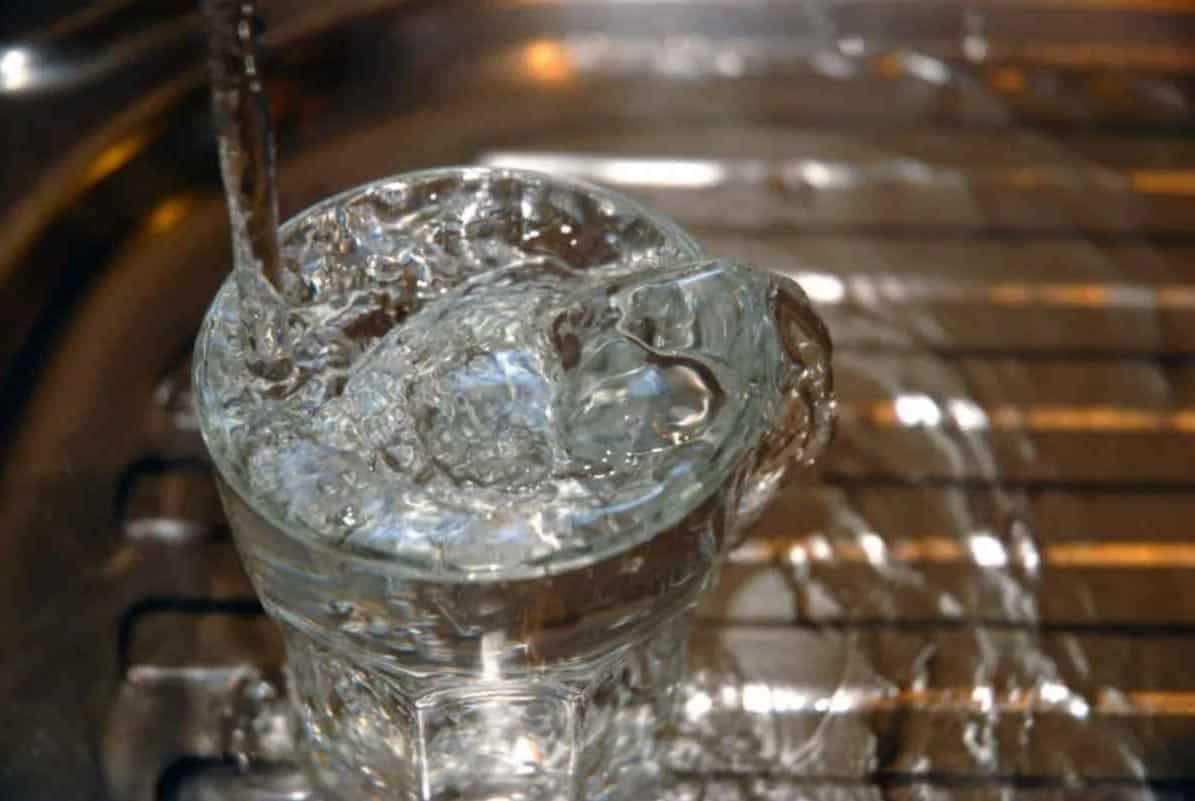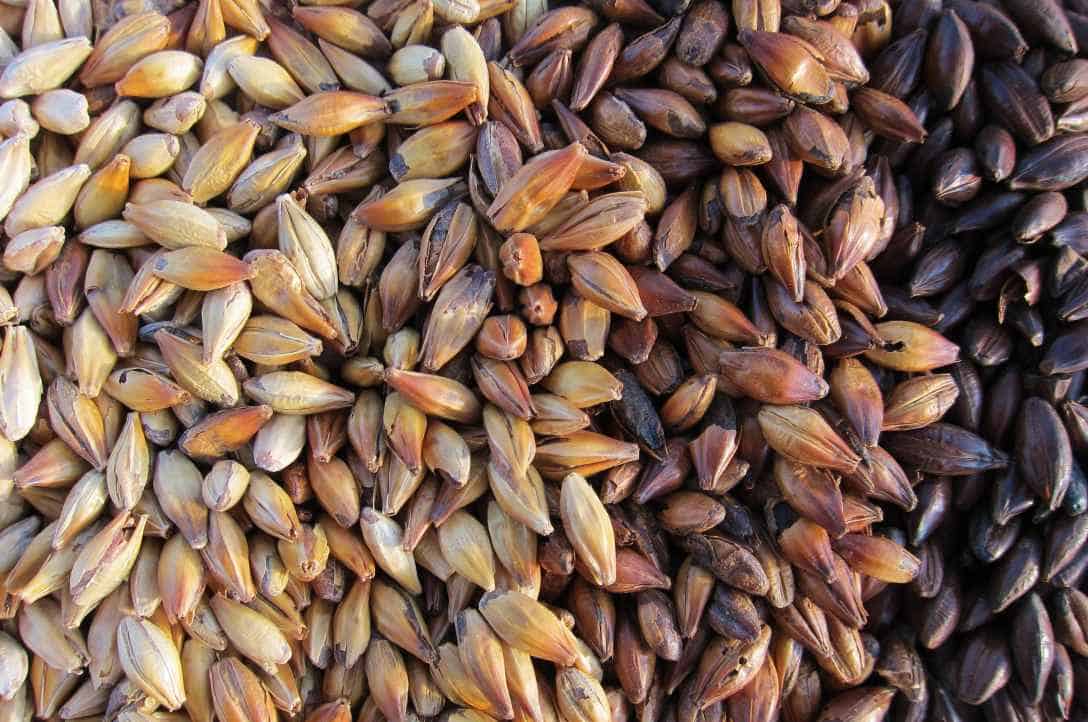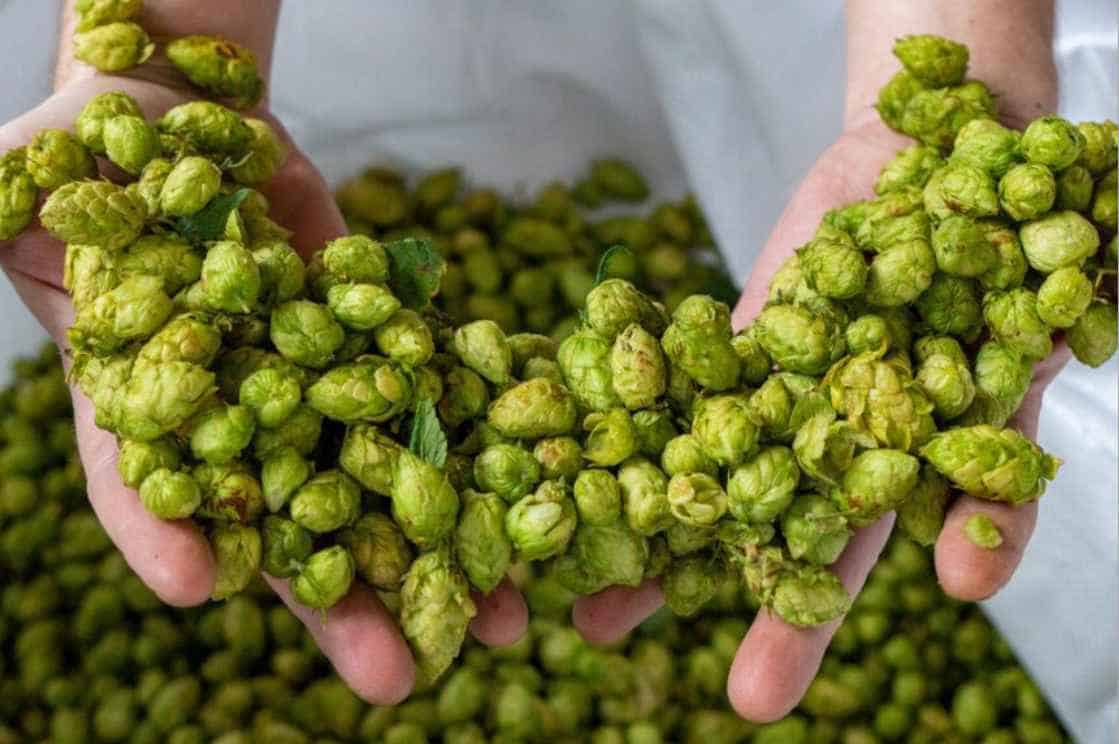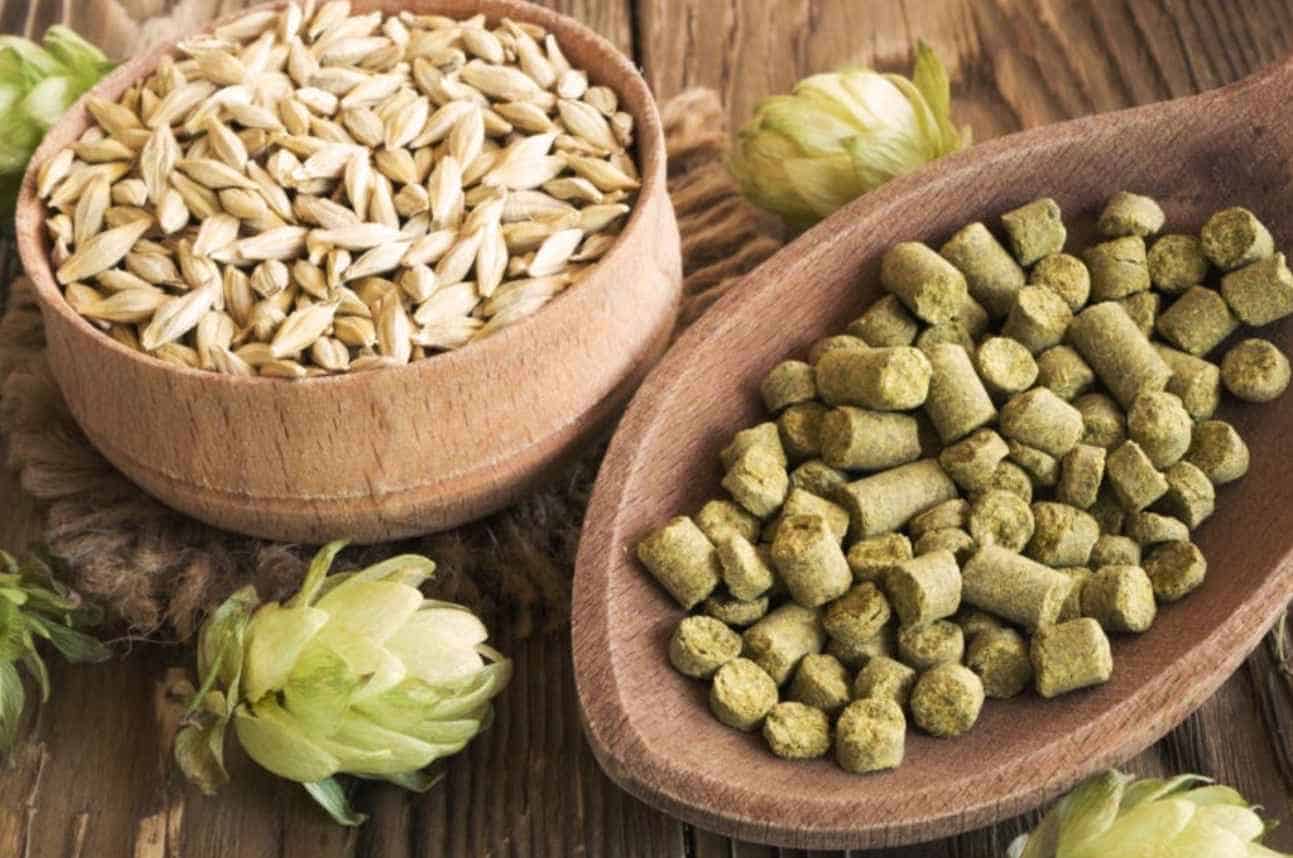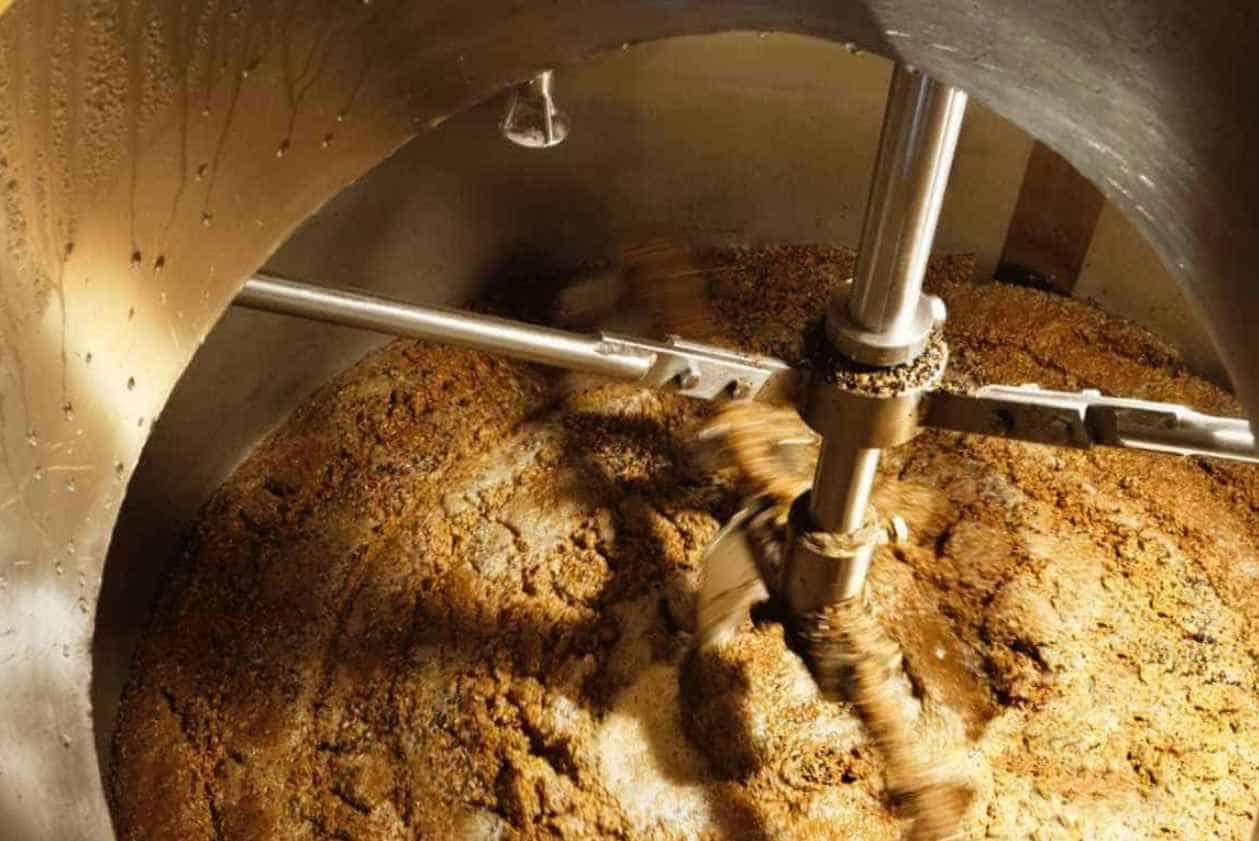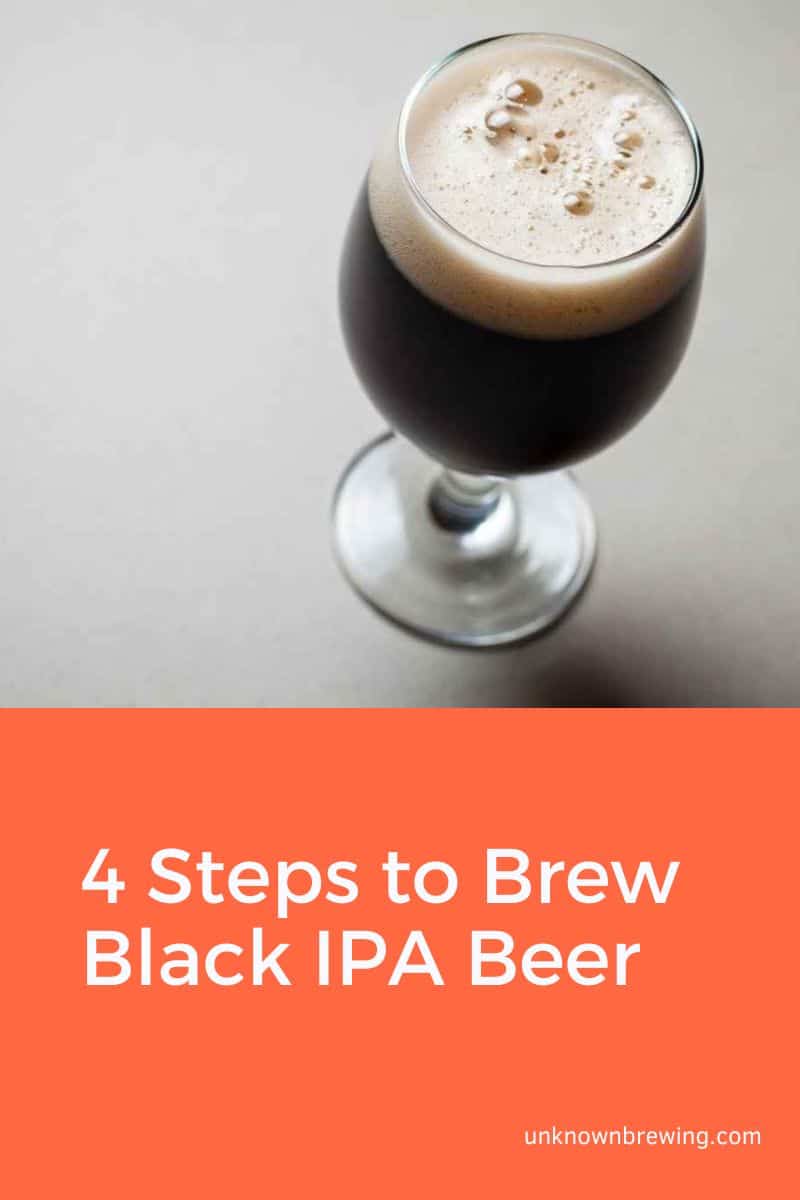Also known as the Cascadian Dark Ale (CDA), the Black IPA is an American-style black ale. While it looks like an imperial stout, the Black IPA tastes like a pale ale. The oxymoronic nature of this brew has been a bone of contention among craft brewers and beer enthusiasts for years.
But rather than argue over the nature of the Black IPA, we choose to brew the beer. And you are invited to this expedition. We’ll use Martin Keen’s recipe, posted on The Homebrew Challenge’s YouTube channel, as a reference point.
But before we sanitize our brewing equipment, below is an overview of the Black IPA
| Black IPA Style Guidelines | |
| Color Range | 25-40 SRM |
| Original Gravity | 1.050-1.085 OG |
| Final Gravity | 1.010-1.018 FG |
| IBU Range | 50-90 |
| ABV Range | 5.5-9.0% ABV |
| Appearance | Color: Dark brown to opaque black, ruby-red highlights.
Head: Persistent, Light tan to creamy brown. Clarity: Clear ale. (Dry-hopping causes hazy to murky characteristics) |
| Aroma |
|
| Flavor |
|
| Mouthfeel |
|
| Serving & Storage Temperature | 46-54°F |
| Appropriate Glassware | Tulip or IPA Glass |
| Shelf Life | 3-6 Months |
| Food Pairings | Main Dish Pairings: Fried Chicken, Butter-Ladened Steak, Spicy Barbeque Short Ribs, Shrimp Stir-Fry, Foie Gras on Toast, and Cheese Burger. |
| Cheese Pairings: Aged Gouda, Cheddar, and Blue Cheese. | |
| Dessert Pairings: Chocolate Truffles, Chocolate Cake, Chocolate Cheese Cake, Carrot Cake With Spice and Cream Cheese. | |
Ingredients Needed
Like any other beer, a Black IPA is brewed from water, malt, hops, and yeast. Let’s look at the specific requirements of these ingredients when brewing a Black IPA.
Water Treatment
Water makes up about 95% of beer. Water character dictates the flavor of your wort and the overall stability of your brew.
The presence of contaminants like chlorine can ruin the flavor of your final brew. For this reason, you must get rid of any traces of chlorine. You can accomplish this by dissolving 25 grams of Potassium Metabisulphite in every gallon of your brew water.
The mineral makeup of your water will also determine the success of your brew. Below is a table showing the recommended water profile for brewing the Black IPA:
| Ion | Concentration (ppm) |
| Calcium (Ca2+) | 90 |
| Magnesium (Mg2+) | 7 |
| Sodium (Na+) | 45 |
| Carbonate (CO₃2-) | 90 |
| Sulphate (SO₄²-) | 75 |
| Chloride (Cl-) | 100 |
| Bicarbonate (HCO₃-) | 110 |
As for the appropriate sources of these ions, below is a table of various salts and their significance to brewing.
| Brew Salt | Chemical Name and Formula | Significance |
| Gypsum | Calcium Sulfate (CaSO4) | Source of calcium and sulfate ions |
| Calcium Chloride | Calcium Chloride (CaCl2) | Source of calcium and chloride ions |
| Epsom Salt | Magnesium Sulfate (MgSO₄) | Source magnesium and sulfate ions |
| Chalk | Calcium Carbonate (CaCO3) | Source of calcium and carbonate ions |
| Sodium Chloride | Sodium Chloride (NaCl) | Source of sodium and chloride ions |
| Baking Soda | Sodium Bicarbonate (NaHCO₃) | Source of sodium and bicarbonate ions |
Malt Selection
The base malt for a Black IPA is usually a Pale Ale Malt. In his YouTube demonstration, Martin Keen shoots for an original gravity of 1.068 OG. To attain this goal, he uses 72% of 2-row Pale Malt. For mouthfeel, Martin adds 7% flaked barley to his grain bill. He also adds 7% Munich I for what he describes as biscuity sweetness.
Martin also adds 7% Cararye to impart “Spiciness” to his Black IPA. And for color, he adds 7% Carafa Special III to his grain bill.
Below is a highlight of Martin Keen’s grain bill.
| Grain Bill Percentage | Malt Variety | Amount Used (Pounds) |
| 72% | 2-Row Pale Malt | 10 lbs |
| 7% | Flaked barley | 1 lb |
| 7% | Munich I | 1 lb |
| 7% | Cararye | 1 lb |
| 7% | Carafa Special III | 1 lb |
Hop Selection
Martin Keen uses Magnum Pellets, Citra, Amarillo, and Cascade Leaves for his video demonstration. The table below highlights the quantities and types of hops used in Martin’s recipe:
| Hop Variety | Quantity | Flavor and Aroma |
| 15.20% Magnum Pellets | 1.0 oz | Citrus, nutmeg, and black pepper notes. |
| 12.00% Citra | 1.0 oz | Citrus, grapefruit, melon, peach, lime, passion fruit, gooseberry, and lychee notes. |
| 9.20% Amarillo | 1.0 oz | Sweet citrus and floral notes |
| 8.90% Cascade Whole-Leaf Hops | 1.0 oz | Zesty grapefruit notes |
Yeast Selection
Martin Keen uses Northwest Ale Yeast or Wyeast 1332. This yeast strain is popular because it doesn’t interfere with the beer’s flavor.
Equipment
Below is a list of the equipment you’ll need for this brew:
- 1 Clawhammer 240-Volt Brew System (Or Equivalent)
- 1 Thermometer
- 1 pH Meter
- 1 Hydrometer
- 1 Whisk or Wooden Spoon
- 1 Pressurized Fermentor
- 1 Grain Mill (Optional)
- 1 Blichmann HopRocket
Steps to Brewing a Black IPA
Below are the steps used by Martin Keen to brew his Black IPA:
Prep Your Ingredients
The first step of any brewing process is cleaning and sterilizing your equipment. Dismantle your brewing system and hop rocket to its basic components. Soak these parts in some sanitizer to sterilize them.
Do the same to your fermentor, hydrometer, and every piece of equipment that’ll have contact with the beer.
Once everything is clean and sterile, pour four gallons of brew-ready water into your brewing kettle. Turn on the heat and set it to 152°F.
While the water is heating, you can mill your grains. Milling involves crushing the malt into coarse particles called grist. Grinding the grain helps increase the surface area for enzymatic action.
Measure 10 lbs of pale malt and 1 lb quantities of Carafa Special III, Cararye, and Munich I malts. Flacked barley does not require milling; you can mash it as is. With all the malt measured, feed the grains to your grain mill and crush them.
Pro Tip: If you don’t have a grain mill, you can have your grains ground at your local homebrew store.
Mashing
Confirm that your strike water has reached 152°F before introducing the grist. Don’t forget to add your unmilled flaked barley. Stir the mash gently with a whisk or wooden spoon.
We’ll let our mash for 60 minutes. But before doing that, you need to check your mash pH. Draw a sample from the mash and take pH readings. The process will differ depending on the nature and brand of your pH meter. Be sure to read the manual before using your pH meter.
The ideal mash pH range is between 5.6-5.8. If you get a higher reading, adjust the mash pH by adding lactic acid.
With the pH level ranging between 5.6-5.8 and a temperature of 152°F, let the mash cook for 60 minutes.
Boiling
After mashing for 60 minutes, withdraw your grain basket and immerse the hop basket. Turn up the heat as you prepare for the boiling phase.
Martin Keen integrates a HopRocket into his boiling routine. Developed by Blichmann, the HopRocket is a hopback device that infuses wort with hop aroma. While the HopRocket is an effective hop infuser, it isn’t recommended for hop pellets. You can only use whole-leaf hops.
To learn more about how hopback devices work, check out the video below:
For bittering, Martin boils an ounce of Magnum pellets for 60 minutes. By his estimation, he hopes to extract 54 IBUs of bitterness from these hops. For flavoring, he uses Citra, Amarillo, and Cascade Whole-Leaf hops.
With 10 minutes to go, add one ounce of Citra and let them boil. With five minutes left on the boil, add one ounce of Amarillo. As you wait for the final five minutes to elapse, load your HopRocket with Cascade Whole-Leaf hops. Kill the heat at the end of your boil.
To feed your HopRocket, connect your brew to your pump and into your HopRocket. Martin further runs his wort through a plate chiller before letting it flow into the pressurized fermentor. With all the connections made, turn on your pump. Let the pump run until all the wort flows into the fermentor.
Seal the fermentor, and let the wort cool to 68°F.
Fermentation
To initiate fermentation, pitch your Wyeast 1332 yeast. Seal the fermentor and subject it to a CO2 pressure level of 15 PSI. Store the fermentor in a dark chamber at a suitable fermentation temperature (usually around 65-72°F). Let the primary fermentation run for seven days.
Final Thoughts, Tips, and Tricks
Do not judge a beer by its color; the Black IPA is the perfect embodiment of this phrase. While it looks like an imperial, it has flavors and aromas consistent with IPA. While Martin Keen has a compelling recipe, you have the freedom to develop your own.
Below are some valuable tips and tricks that can help you create your Black IPA recipe:
Malt Selection
The base of any Black IPA comprises at least 70% Pale Ale Malt. But you can opt for an equal amount of Marris Otter malt for an extra biscuit flavor with additional sweetness. However, this choice can dampen hop aroma.
Black IPA guidelines allow for Munich Malt additions of 5-15%. You can choose to go higher, up to 20%. But beyond this level, Munich Malts clash with American sea hops. Not many people enjoy this flavor.
Cara Munich additions are allowed up to 5%. The darker the malt, the toastier the flavor. To keep up with the style guidelines, stick to the lighter versions of Cara Munich Malts.
Rye is another grain you can use to brew a Black IPA. Rye adds a sharp bite with an interesting mouthfeel. Black IPA guidelines allow for 1-3% rye in your grain bill. You can opt for huskless rye to reduce astringency.
Wheat Malt is another popular grain choice. Additions of 3-5% help impart a background flavor to the Black IPA. You can opt for either regular Wheat Malt or the Crystal Version.
Black IPA is a dark beer, and it requires dark malts. Appropriate dark malts for this beer style include:
- Chocolate Malts (4-6%)
- Regular Crystal Malt (3-7%)
- Black Malt (1-2%)
Pro Tip: You can reduce astringency by opting for huskless dark malts.
Hop Selection
Citrus hops make excellent choices for Black IPAs. You should consider Cascade, Centennial, Chinook, Simcoe, and Nothern Brewer hops. Other popular hops for this beer style include Mosaic, Citra, and Comet.
Yeast Selection
WLP013 is a popular liquid yeast selection for this beer style. It creates fruity esters without restricting the hops. Another popular liquid yeast is Wyeast 1332.
As for your dry yeast options, you can choose between Fermentis US05 and Fermentis S-04. Fermentis US05 is the most popular due to its neutral profile and dry finish. Fermentis S-04 creates fruity esters, characteristic of English ales.
That’s all the information you need to brew your own Black IPA. Are you ready to start brewing? If not, what’s your excuse?

As a homebrewer, Michael would get frustrated about the lack of brewing information on the internet. After hundreds of gallons of spoilt batches, Micheal had enough. And he founded Unknown Brewing as a resource for homebrewers.
